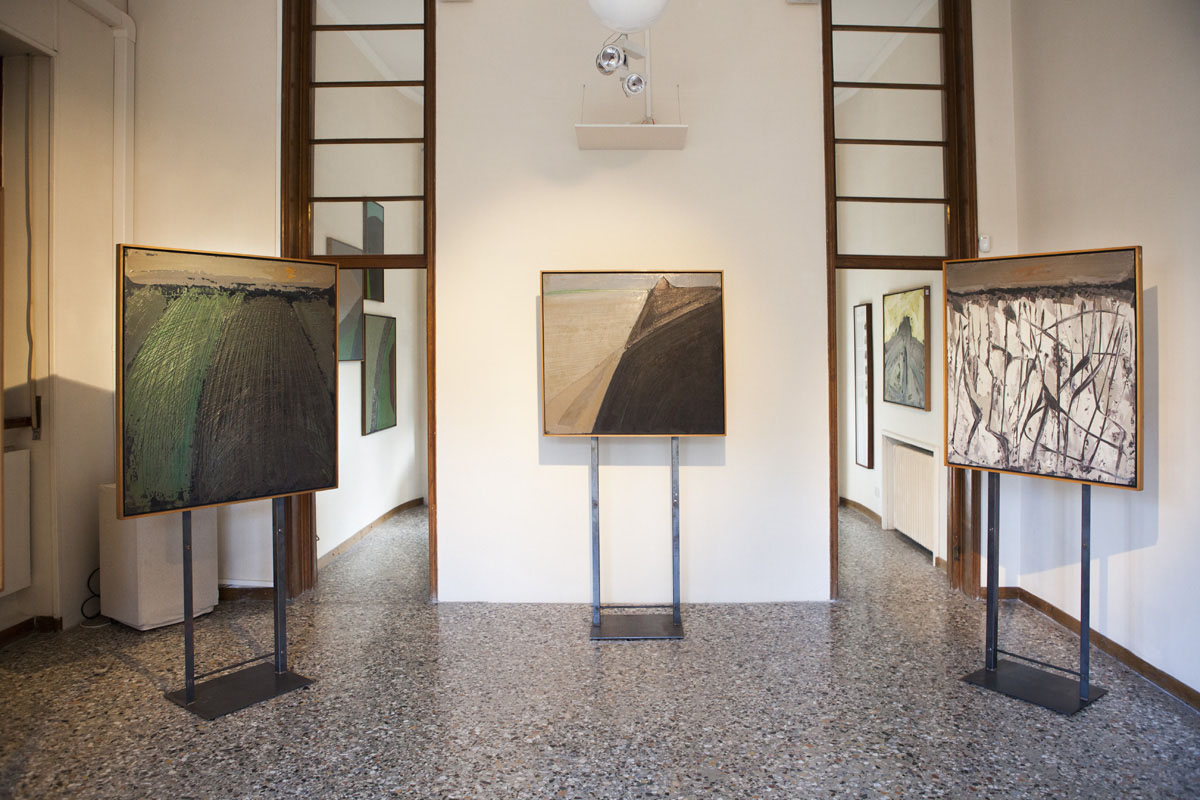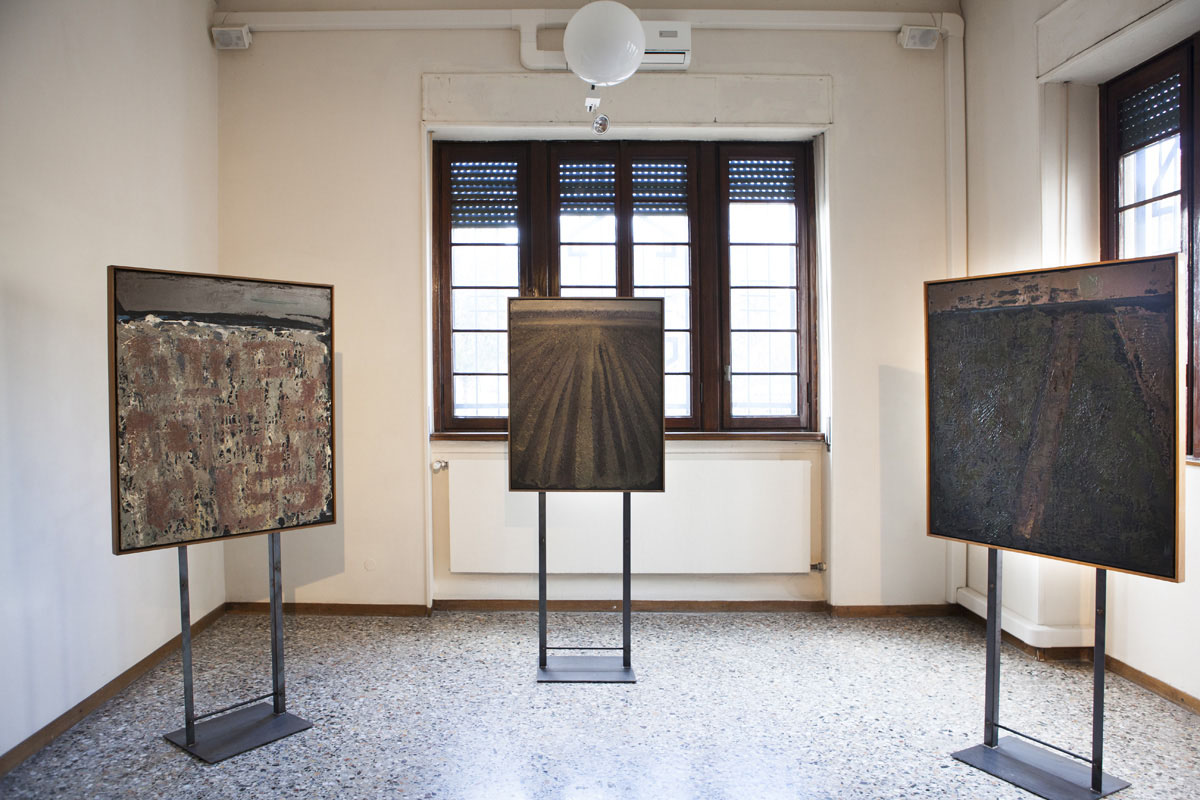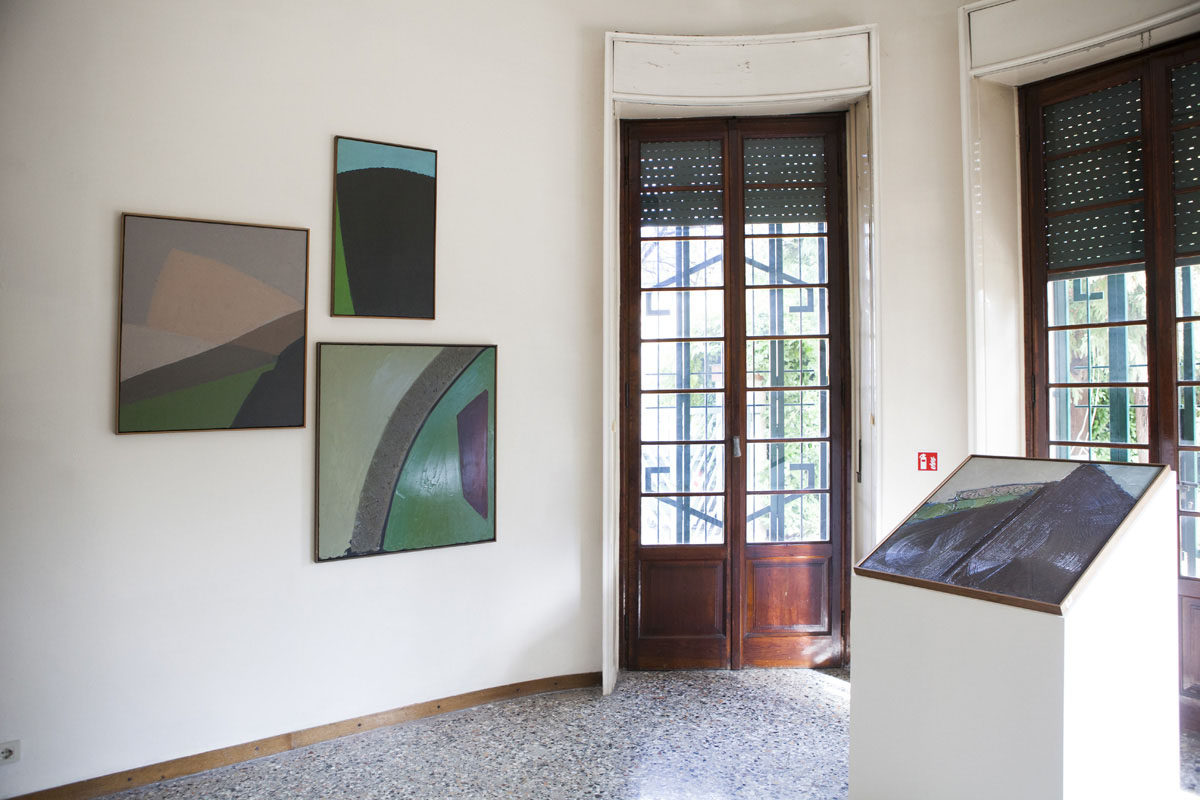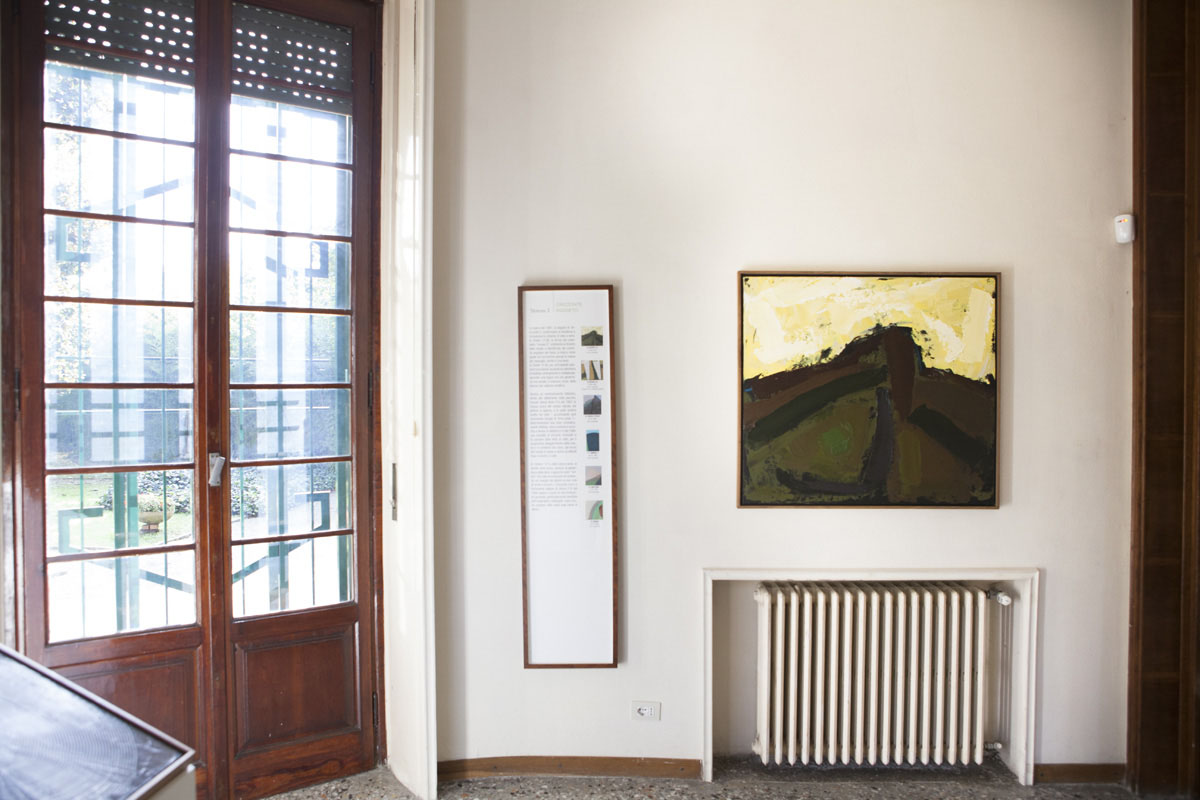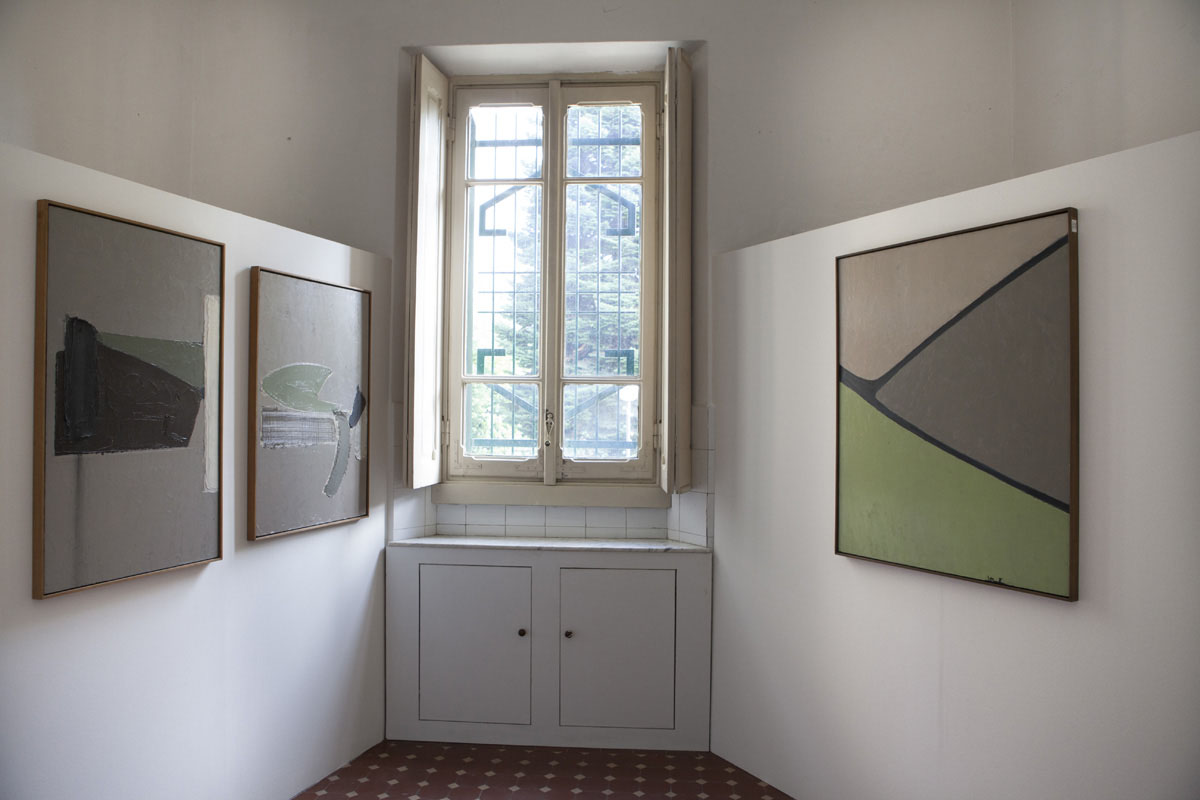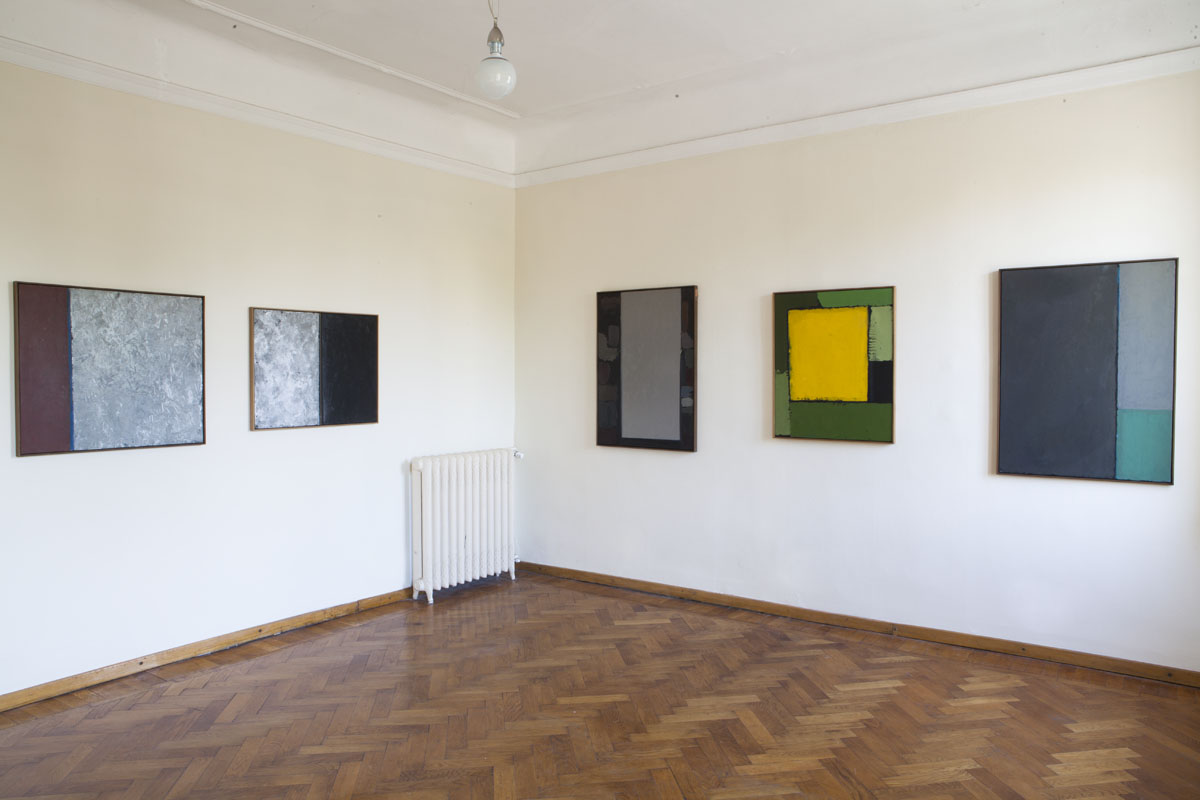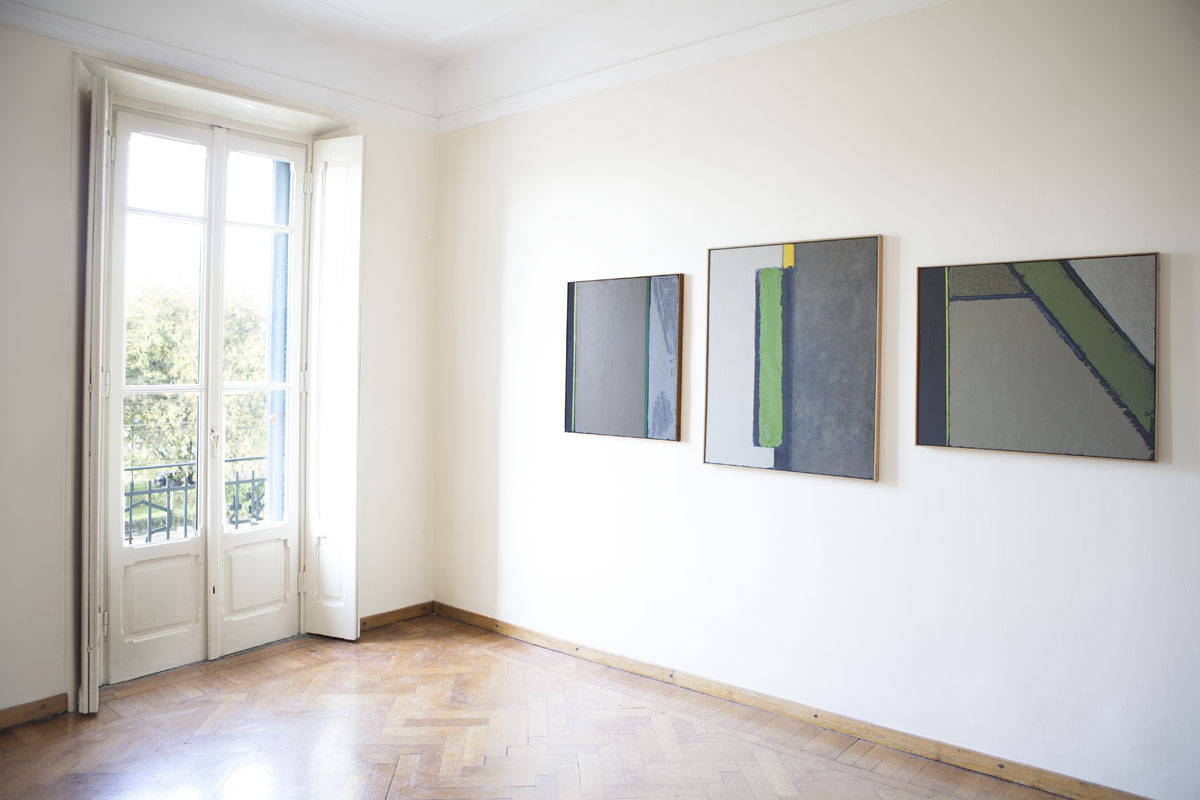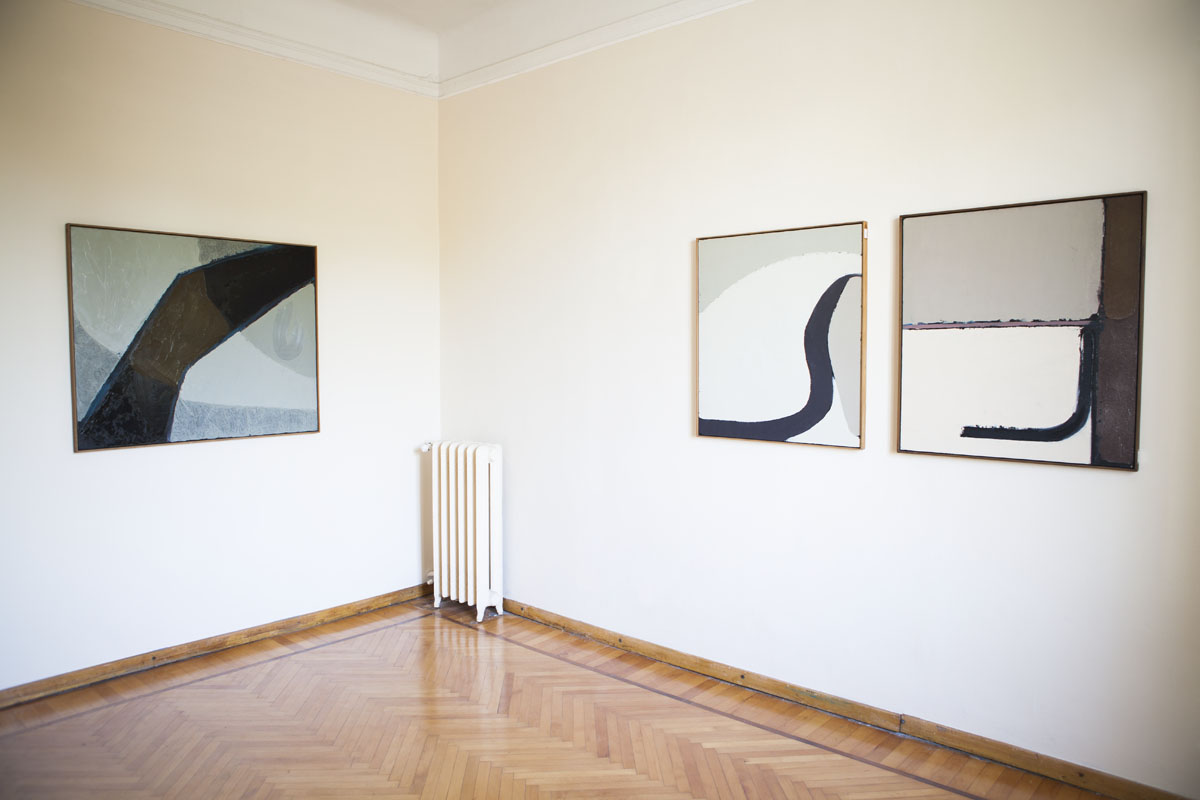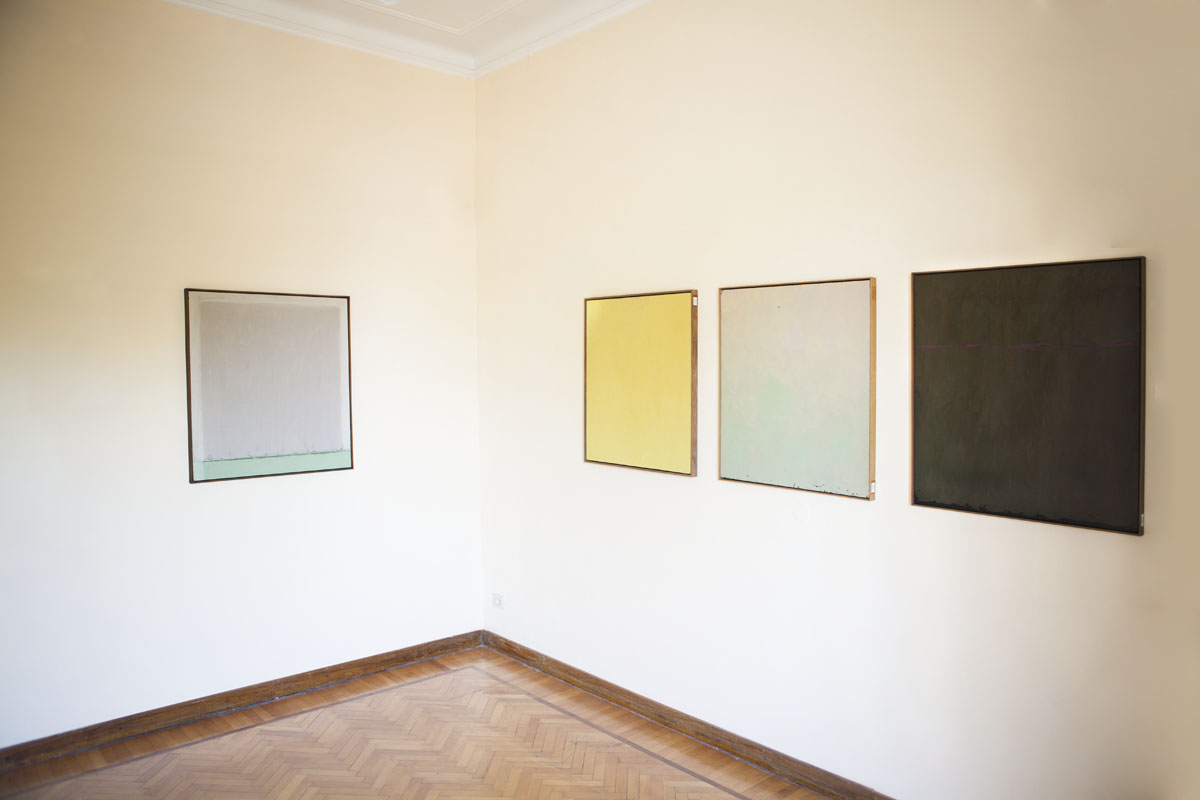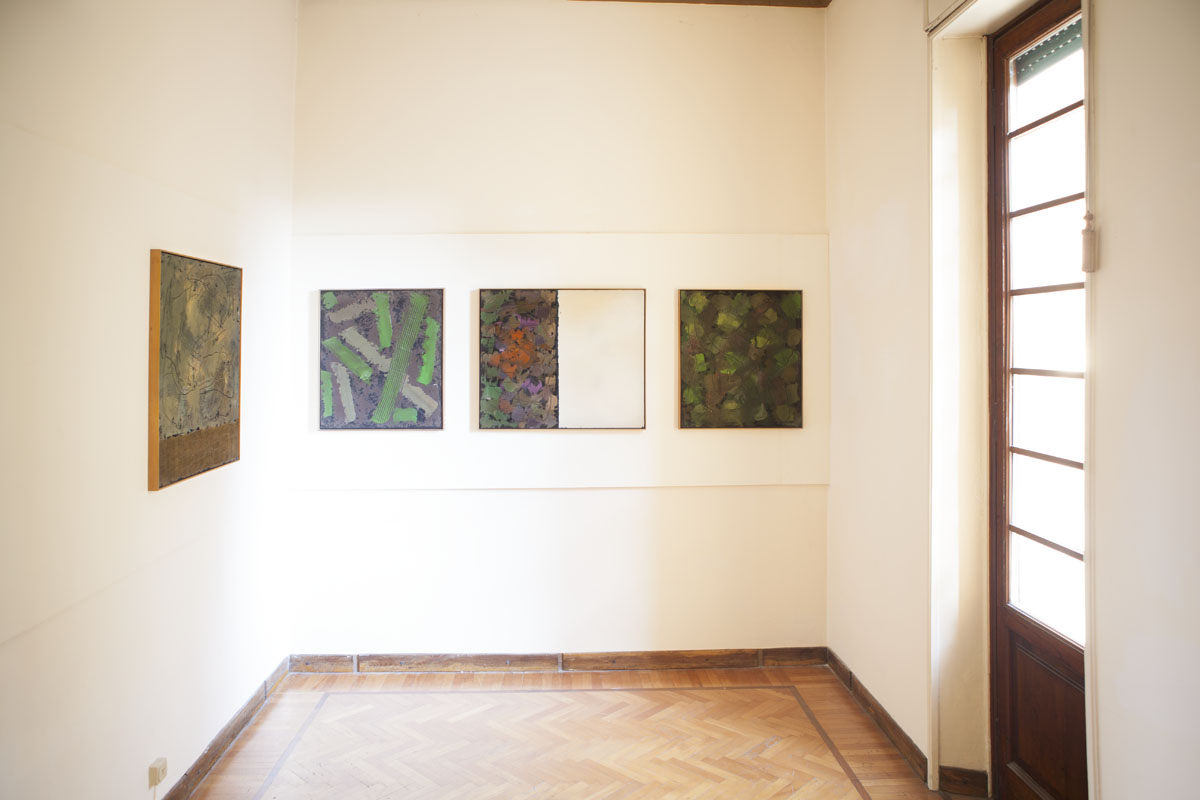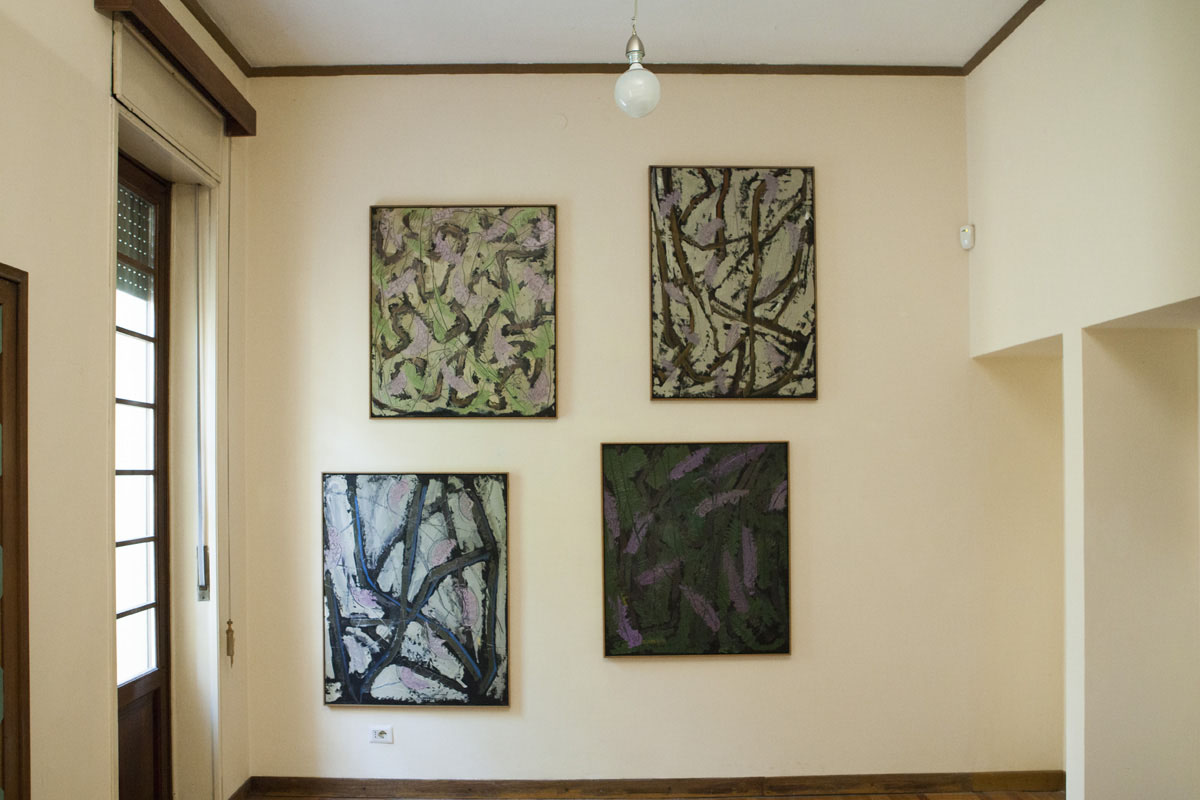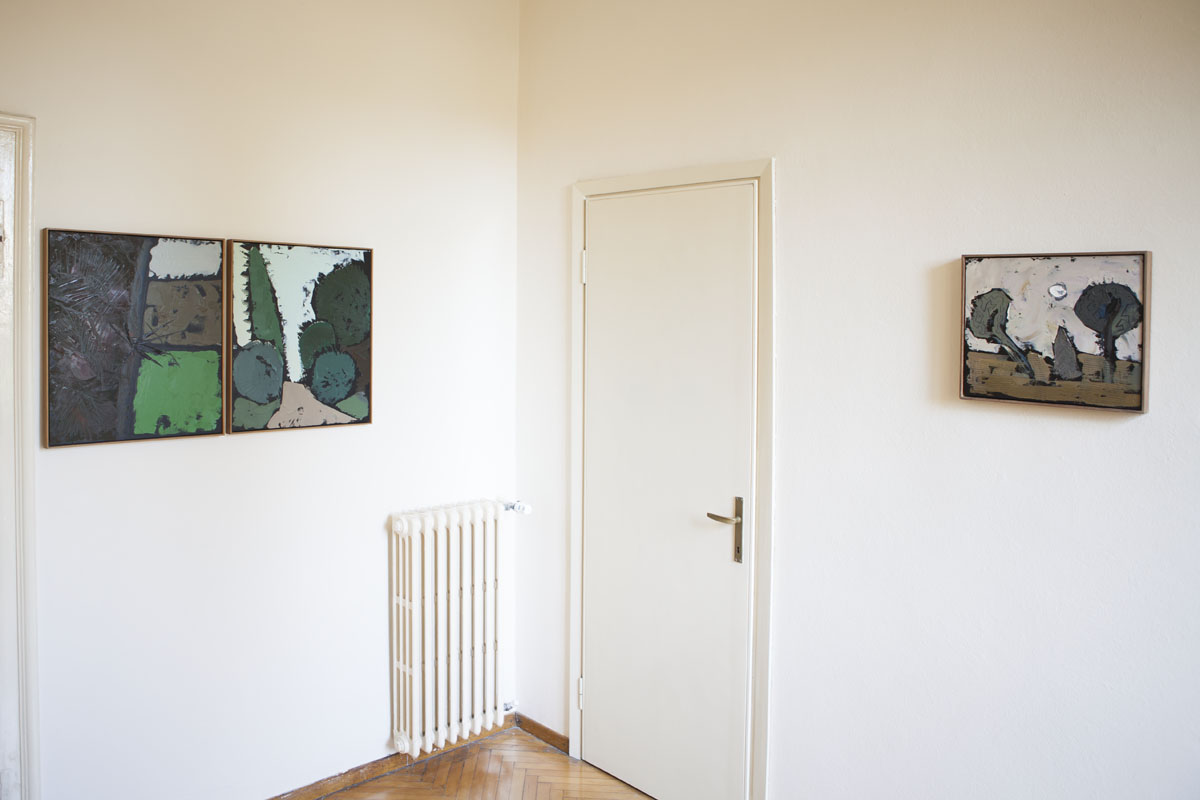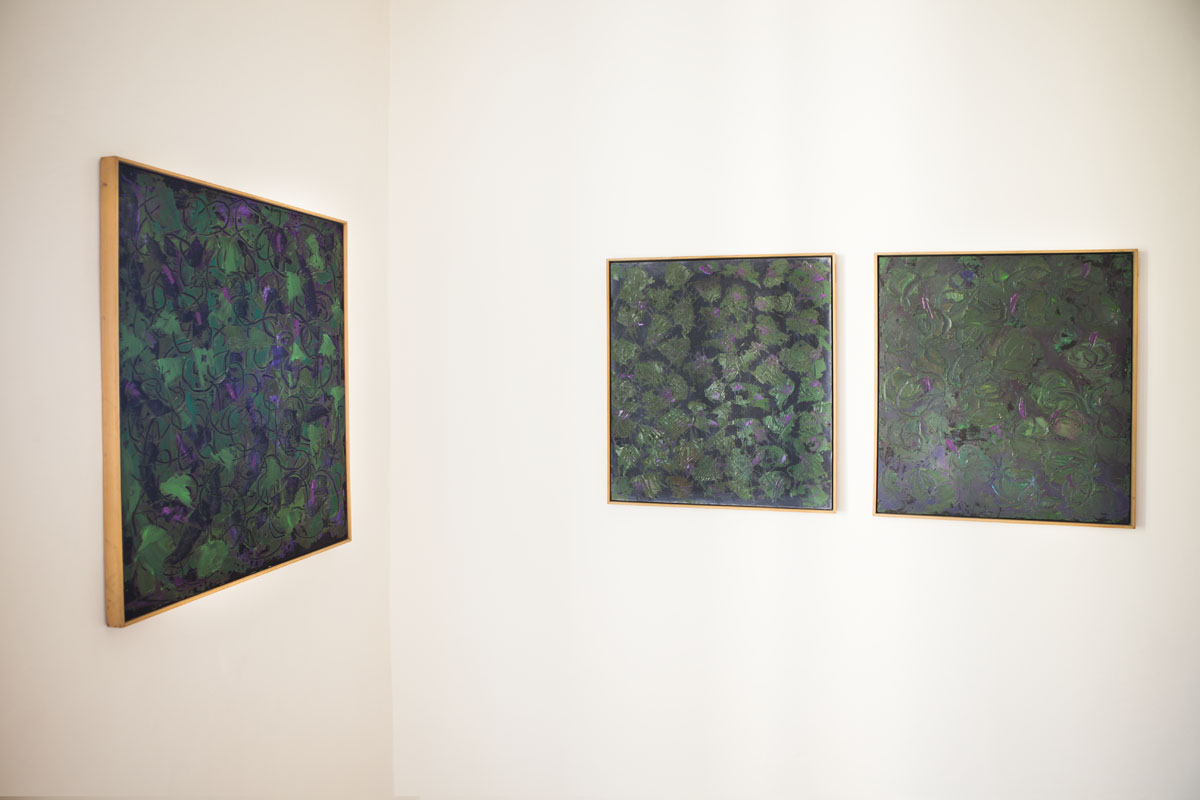William Congdon, PIANURA
Curated by Davide Dall’Ombra and Francesco Gesti
Casa Testori
11 October 2015 – 14 February 2016
A GOLDSMITH OF OUR TIME
Giovanni Testori
Como, March 1983
I think all those who have seen an exhibition of William Congdon’s work will have been struck by – and then reflected upon – an overall truth which forms a sort of basso continuo, a background hum, to that great master’s entire career. It is the perfect basic truth, in that it is – or should be – the basic truth for each and every man: from the artist’s work emerges the luminous and tenebrous fact that he, William Congdon, may have been an American citizen, someone born in America, but is in fact a citizen of the world. His history unfolded not in one city, one nation or only one culture; its life blood – the energy feeding it, the destiny forming it – came from visiting, knowing, loving and, I would say, enfolding and embracing a number of cities, nations and cultures. An encounter with a nation, a culture, a city, a town, the curve of a bay, a particular stretch of sea or the gentle expanses of the plains of Lombardy – each of these marked a definitive Assumption and a definitive Fall; the painter was caught up within the truth of these various sites, these various cultures, towns, stretches of sea or expanses of landscape. Not that Congdon changes; he remains himself, naturally, as he continues on his adventure. But I would say that his destiny was to embrace, to be embraced and consumed by, the reality he was driven to encounter by his thirst, his need, to know other cities, nations, cultures and towns (that is, to know creation, to know the earth). It is a relationship that is almost eucharistic – and, one might say, slightly cannibalistic.
And thus he left New York to proceed through a sequence of images that are unparalleled in the history of modern painting. Some painters have given us images of fragments of the world that may be surprising, memorable, pathetic, glorious or dramatic. But no painter has given us such a concatenation – what I would call an epic poem – in which the most various cities of the world are sung by a bard who is made triumphant by the very fact of his defeat.
THE EXHIBITION
“Pianura” is the exhibition that Casa Testori dedicated in 2016 to the painter William Congdon (1912-1998): an international Action Painting artist loved by Giovanni Testori who, from the New York of his friends Jackson Pollock and Mark Rothko, after travelling all over the world, decided to settle down in the south of Milan and dedicate his last production to the intimate portrait of cultivated fields, rice paddies and fruits of the Lombard land.
The exhibition, organised in collaboration with The William Congdon Foundation, aimed to explore the American master’s twenty years in Lombardy. The approximately 50 paintings and 20 pastels selected described a parabola of increasingly intimate and profound knowledge of the south-west of Milan, which constitutes the high point of his career.
The thematic rooms presented the various cores around which his production is articulated: the issues addressed alongside the action painters re-emerged in a new key, the result of an observation that was only apparently sedentary.
After the New Yorks of the 1940s, the Sahara and Santorini of the 1950s, the research turned from spatial to temporal. The protagonists become the power of the earth, its transformations and the inexhaustible mutability of the seasonal cycle, crops and atmospheric phenomena. This is how the fields are called by name and the passage of time is fixed with the spatula between the long furrows of the oil painting.
Reconstructed for the occasion, a sort of imaginative picture gallery immersed the visitor in nocturnal visions of the colour of the fertile fields, in an intimate, lyrical, if not mystical and symbolist relationship with the earth, barley, soya, maize, wisteria and violets.
These were not idyllic visions, however, because Congdon’s gaze led him to disrupt the horizon over the fields, which changed from a linear arrangement still reminiscent of cities to a shifting of planes, almost as if to follow the telluric transformations of origin. A torment, also of a material nature, which is resolved and finds peace in the extraordinary Nebbie (Fogs), which opens the way to the monochromes, introducing a profound transformation in the perception and representation of space, of the relationship between its structural elements (sky, earth and horizon) from an increasingly less naturalistic perspective.
Thus, the meditations on the work of Braque and De Staël re-emerged, but above all, the comparisons and pictorial dialogues woven in direct contact with the New York School of Betty Parson and Peggy Guggenheim, which brought Congdon’s works to the most important museums in New York and to the Peggy Guggenheim Collection in Venice.


